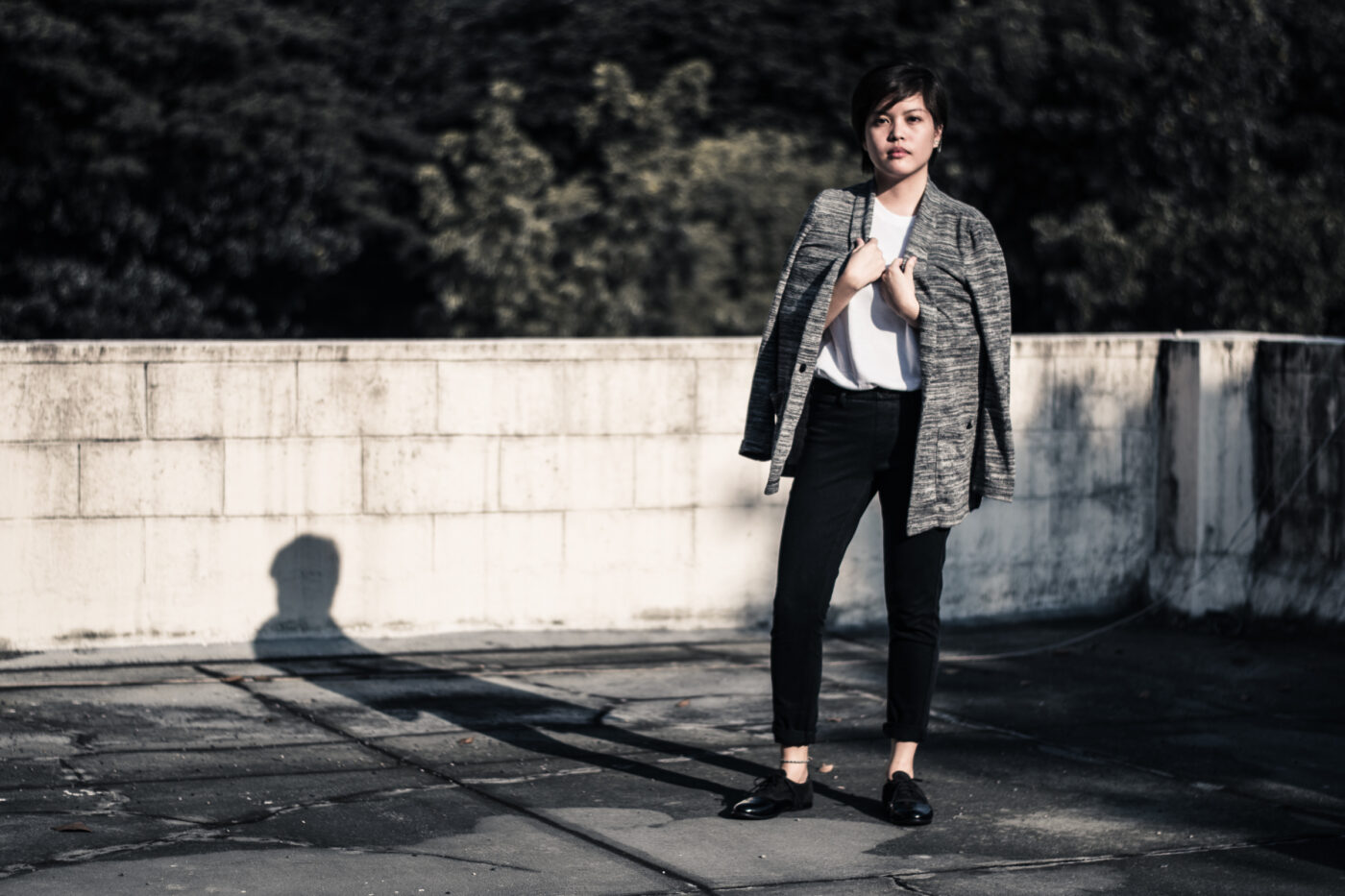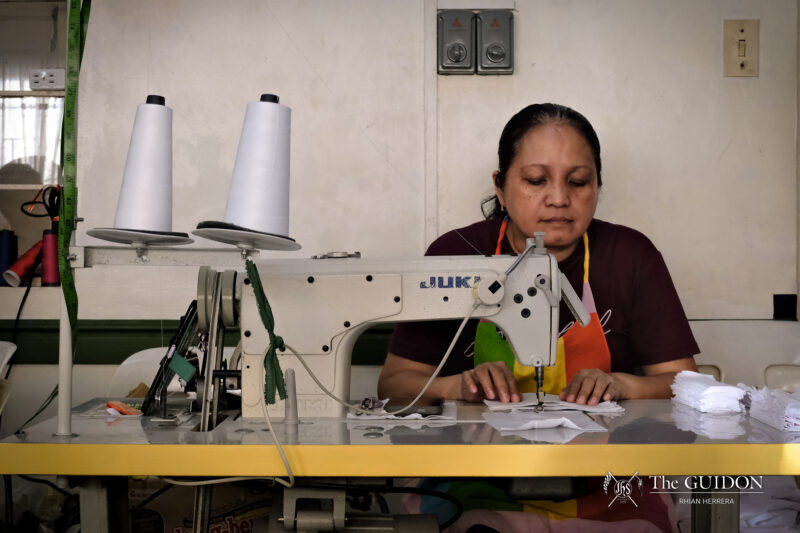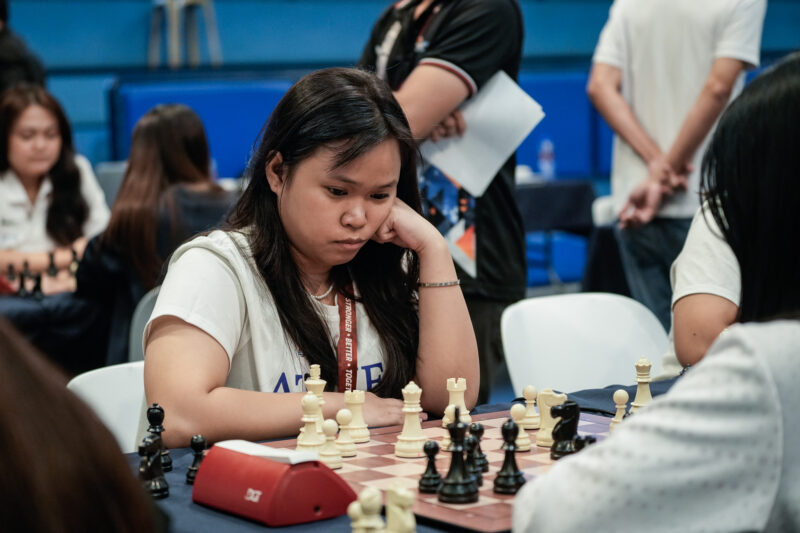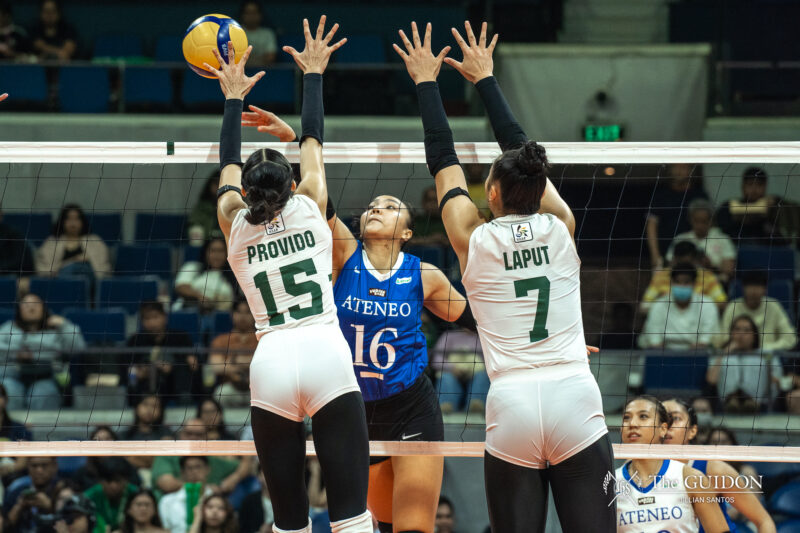It all started when Katherine Hepburn slayed the pantsuit in the 1930s—with a men’s button-down polo tucked into high-waisted loose slacks topped with a suit jacket. With that, it became a sexy feat for women to pull off the tuxedo.
Fast forward the present, a few years after Kanye West made his grand fashion move appropriating a Céline blouse at the Coachella festival in 2011. Yeezy was immortalized as one of today’s boldest hip-hop artists when he donned the open chested silk top accompanied with gold chains.
With genderless fashion philosophy revisited, it’s now in trend to break the rules. It’s not cross-dressing, it’s androgyny—the latest fashion culture to abandon conventional cuts and silhouettes for self-expression and functionality. Nikki Riel, interdisciplinary studies supersenior, wears draping shirts and pieces in neutral colors to embody the androgynous look. He calls it “a play of clothing while still being a vision of style.”
Fashion has been straying from the conventional gender binary and bending established fashion concepts into what is called the agender and gender-neutral fashion styles. Although this not a relatively new topic for Filipinos, much is to be said about the influences of gender-neutrality and the prospect of Filipinos adopting the agender fashion.
Fashion reborn
This cross-pollination of men’s and women’s wear is called androgyny. There are two strains to it—gender-neutrality and agender fashion.
Mary Racelis, PhD is a specialist on gender research who works part-time at the Institute of Philippine Culture and delivers lectures on gender studies at the Ateneo. She explains that gender-neutrality refers to the absence of clear lines of gender distinction, while being agender, on the other hand, implies that there are lines, but one doesn’t pay attention to it.
“If there is a difference,” Riel adds, “it would be the manner [of] how it is achieved. Other than that, the purpose or intention is the same, a look that would fall under androgynous style.”
We are no strangers to androgynous fashion—a recurring theme that almost never goes out of style, especially in high fashion. Male and female models are often mixed in gender-bending collection advertisements by big fashion houses like Gucci, Prada, and Yves Saint Laurent.
Androgyny slowly found its way from the runway to department stores as well. London’s Selfridges opened Agender, a unisex pop-up shop that holds labels like Rick Owens and Raf Simons. Likewise, Ellen DeGeneres has recently collaborated with Gap Kids in launching a non-gender-specific fashion line that encourages gender-neutrality in the youth.
Riel says that gender-neutral clothes are “safe,” designed and fashioned to avoid gender connotations. “Safe” could mean a futuristic and minimalist aesthetic with a black and white color palette and framed silhouettes shaped by loose tops and subtle drop crotches as seen in brands like One DNA—an innovative clothing line from the United States.
Being agender, on the other hand, is more diverse. It’s bending the rules and remodeling notions about specific clothing pieces—clothing articles like skirts gendered for females are now slowly being accepted as pieces that men can also pull off. Iconic male figures have begun to dress to kilt with this daring move—Marc Jacobs and a plaid Comme des Garçons, Kanye West in a black leather Givenchy, and, of course, let’s not forget Vin Diesel’s pleated skirt.
The big step
With the rise of more and more striking arrays of clothing, communication sophomore Chynna Lim shares some of her observations on recent trends in fashion. Having interned at several fashion companies since the age of 15, Lim has also been up-to-date with various fashion blogs and websites. “Men are being more adventurous,” she says, listing florals and looser silhouettes as prominent features of men’s fashion today.
She also remarks that women’s fashion is “definitely more liberal” now as more and more women are wearing tuxedos, snapbacks, and other clothes formerly attributed only to men.
With all this talk about gender-neutral clothes, one may think that clothing stores the world over may begin to do away with gendered clothes altogether. Racelis, however, doesn’t think so. “No way. This is all fashion. It moves—it changes,” she explains.
The question that follows this ubiquitous direction, then, is whether or not Filipinos are ready to accept this into our culture. Although widespread examples aren’t exactly common, there still are local fashion figures like Joey Samson, whose vision for androgynous fashion is met with celebration instead of aversion. In fact, Ellen Adarna wore a Joey Samson silk suit to the 2015 Star Magic Ball and rocked the androgynous look the whole event.
In an article published in the Philippine Star, Samson is given due recognition: “Known for his pieces that know no gender, this master of androgyny has made a name for himself in fashion as a highly conceptual designer focused on the process rather than the surface.” This kind fashion, though, isn’t just limited to the high-end fashion designers that abound.
Lim explains this further by going down to the structure of different levels in our local fashion outlets. First are the high-street brands. “That’s Zara, and Topshop, then there are the lower-end brands—Forever 21, H&M—then it enters our tiangge,” she shares. “It gets watered-down and watered-down. That’s when Filipinos start wearing it… But at the same time it’s just us making it us—our own.”
The temper of the times
Giulia Go, a sophomore diplomacy and international relations major, speculates on the acceptance of fashion in this day and age. She quotes fashion designer Mark Bumgarner, “I believe clothes should transcend age and/or generation.” Lim touches on this as well when she predicts how people are generally becoming more accepting and open-minded towards these things.
As the trend permeates current fashion, it leaves us with an evolved understanding of social norms. “It reflects the temper of the times. Gender is being redefined,” says Racelis. “That process is reinforcing that trend, but I think the clothing part will move on, though the issues about gender will maybe continue.”
There’s no doubt that these trends must have come from a root cause; for Lim, this comes from fashion designers in general. Riel has a different perspective however, as he cites the fine line between those who dictate and those who influence. For him, fashion designers and magazine writers act as influencers as they inspire their audiences about what clothes blend well together. These influencers however were never intended to dictate what is and what isn’t gender-neutral. “Style is personal,” he adds.
Androgyny may not necessarily be for everyone, however. Dana Olvina, a communications sophomore, speaks for those confused within the conventional gender binary. “The main people who can benefit from this are really the people who identify as agender or gender-neutral,” she shares. She adds that androgyny also benefits “those who are confused, as well as those who don’t want to conform to the rigid stereotypes.”
Go supplements this claim. She says, “In fashion, we shouldn’t be limited by what people say—it should be fun. There are always social norms, but the thing is, it’s your identity [at stake]. Gender-neutrality allows people to discover themselves.”
As fashion changes, our understanding of gender evolves hand-in-hand with it. Androgyny has become a catalyst towards a contemporary fashion movement, and it seems to be here for the long haul. While it remains a practical choice for most people today, it also carries with it a statement: People can wear anything they want, regardless of gender.







